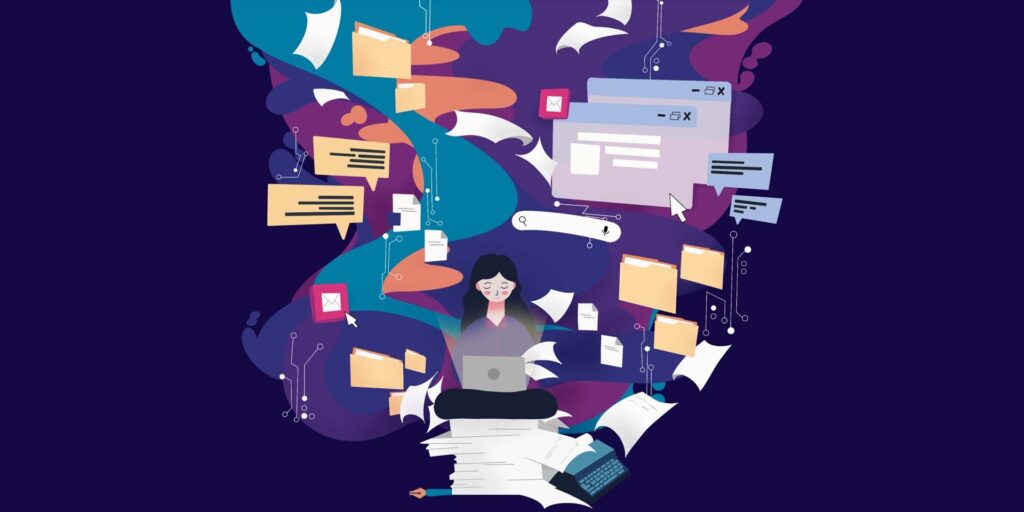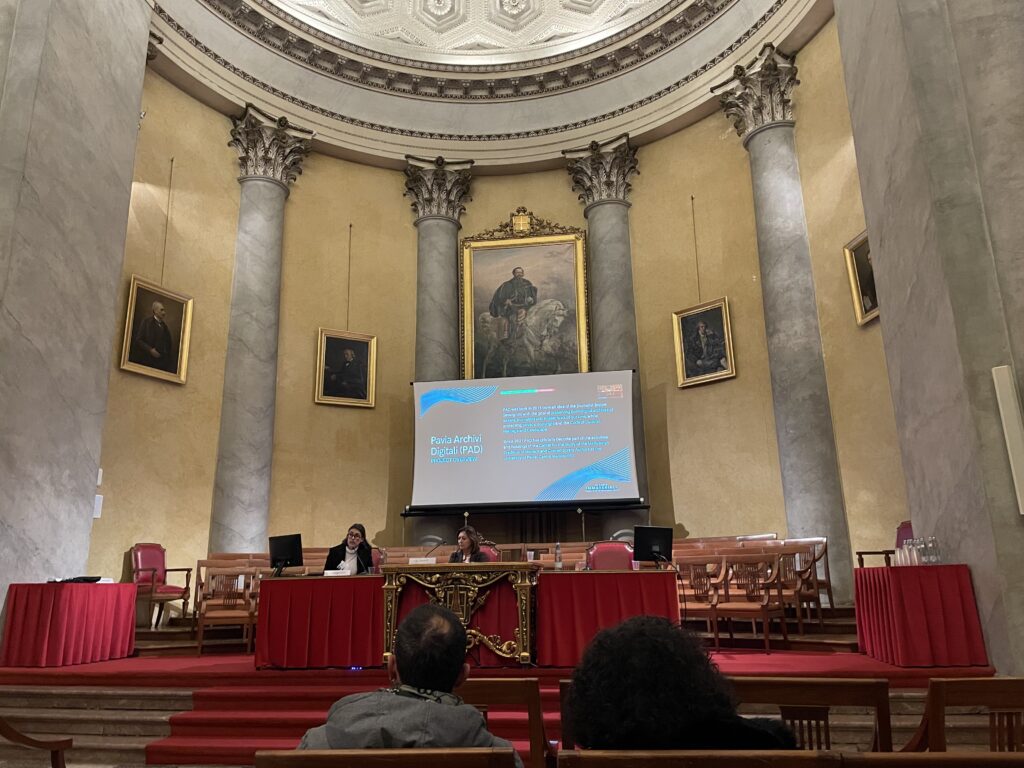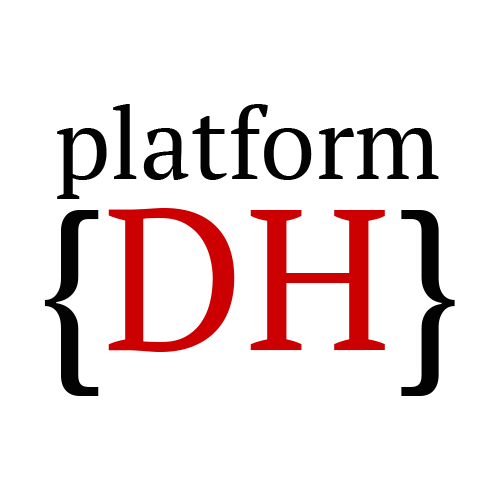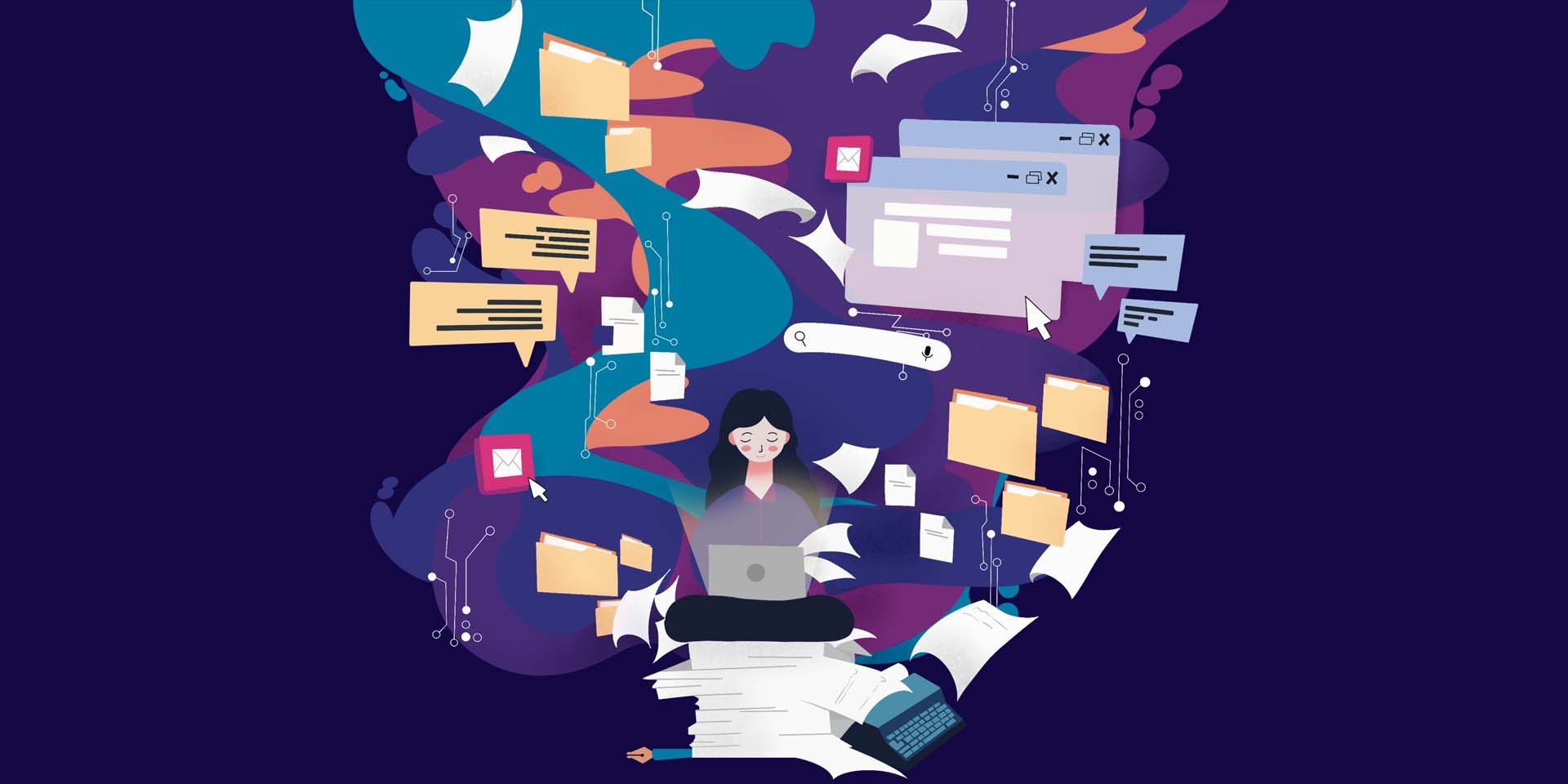Born-digital archives are already a reality in (literary) heritage institutions, and their share will only increase in the near future. This presents a number of challenges and opportunities for those involved in working with personal and literary archives, including scholarly editors and genetic critics. From 11 to 13 December 2023, I (Lamyk Bekius) was fortunate enough to be invited to speak about my research on born-digital literature, including that for CLARIAH-VL, at the conference The Intangible Papers: Authorial Philology and Born-Digital Texts, organised by the Centro Manoscritti of the University of Pavia. This conference, the first of its kind in Italy and unique even in the European context, aimed to provide an overview of the state of the art in the acquisition, preservation, and study of born-digital archives by bringing together speakers from various international universities and institutions to share their experiences – and did so with success.

The multilingual (Italian/French/English) conference began in the afternoon of 11 December with the opening speeches by journalist Beppe Severgnini, who came up with the idea for the Pavia Archivi Digitali (PAD) in 2009, and Giuseppe Antonelli, president of the Centro Manoscritti of the University of Pavia. Stefano Allegrezza (University of Bologna) outlined the state-of-the-art on personal digital archiving in Personal digital archiving: stato dell’arte e prospettive future. Anna Rovella (University of Calabria) then reflected in her presentation La pienezza dell’effimero on the digital preservation of emails, where she analysed critical focal points and suggested possible solutions to the challenges posed by such ephemeral information sources. Lucia Giagnolini (University of Bologna, University of Pavia) closed the first day with an overview of the history and recent developments in the PAD project, in her presentation From acquisition to preservation: the new digital preservation workflow of Centro manoscritti in Pavia. For the Digital Preservation Workflow of the PAD project, they have developed an intuitive application that encompasses all the operations from acquisition to consultation.
Authorial Philology and Digital Texts
On Tuesday 12 December, the day opened with the presentation Harnessing Digital Traces: Dualities and Decisions given by Christopher (Cal) Lee (University of North Carolina at Chapel Hill, who focused on the dualities (such as “just in case” and “just in time” involved in digital curation and he touched upon how BitCurator NLP can assist in the curation process of born-digital collections. In Capturing, Collaborating, and Curating: A Community-Led Approach to Contemporary Born-Digital Literary Archives, Justine Mann (British Archive for Contemporary Writing, University of East Anglia) argued for greater collaboration between archivists, digital humanists, literary scholars and writers to address the challenges of managing born-digital collections. To illustrate this, she presented the Mellon Foundation-funded project (2022-2023), “New Ways of Collecting, Collaborating and Curating: Towards a Centre for Contemporary Poetry in the Archive”, which takes a community (poet) led approach to the building of a collection of contemporary poetry archives by writers currently underrepresented in British and Irish Literature.
The following sessions proved that genetic and philological analyses are still possible with born-digital archives, and can lead to interesting results, despite the inevitable challenges. First, Aurèle Crasson, Jeremy Pedrazzi, Jean-Louis Lebrave, and Laurant Alonso (ITEM), presented their work on Derrida’s digital archive in their presentation Derrida hexadécimal: genèse forensique du “Toucher Jean-Luc Nancy”, in which they reported on their digital forensic genetic analysis of a corpus of Derrida’s work published in English in 1993 in the journal Paragraph. Frederico Milone (University of Pavia), in L’indagine filological al tempo del native digitale: il caso “Sirene” di Laura Pugno, then presented his philological study of the born-digital materials of Laura Pugno’s novel Sirene. Milone concluded that tools are necessary when working with born-digital archives, given the vast amount of data, but also that close reading remains essential to arrive at a proper analysis, as tools may fall short when working with this new materiality. He illustrated this by showing some results of collating the versions of the novel with CollateX: when there are only small differences between the versions, the collation works well, but with born-digital versions the changes are usually too numerous and the collation does not give the desired results. In these cases, the collation can only point to the places in the text where there have been major revisions.

In the afternoon, I presented my research experiences with born-digital archival material in my presentation Genetic Criticism Applied to Born-Digital Literary Heritage in Flanders: From Floppy Disks to Keystroke Logging Data, providing examples of my genetic analyses of the born-digital genetic dossiers by Herman de Coninck (files on floppy disks), Bart Moeyaert (Word documents) and David Troch (keystroke logging data). My research to gain insight into the contents of the files on the floppy disks by Herman de Coninck – and in turn to use them for a text genetic analysis – is a research scenario for CLARIAH-VL (you can find more about this research scenario soon on the blog of CLARIAH-VL). In the last presentation of the day, “Dissigilla i files, selezionali, annientali”: materiali digitali dall’archivio di Franco Fortini, Emmanuela Carbé (University of Siena) gave interesting examples from the ongoing recovery and philological work done on the born-digital material (the floppy disks) of Franco Fortini.
Behind the scenes of the Harry Ransom Center and the British Library
The final day of the conference offered a look behind-the-scenes of the born-digital collections at the Harry Ransom Center and the British Library. In her presentation Bits and Terabytes: Born-Digital Archives at the Harry Ransom Center, Brenna Edwards (Harry Ransom Center, The University of Texas, Austin) explained her workflow for handling born-digital material in the collection of the HRC. Callum McKean (British Library) outlined in Born Digital Archives: Capture, Description, Access how the British Library acquires, preserves, and provides access to its born-digital collections. Alessandro D’Arminio Monforte (NetworkLex) Eredità digitale, privacy,GDPR e diritto d’autore: ostacoli all’accesso delved into the complexities of the inheritance of digital assets (cryptocurrencies, e-mail messages, websites, passwords, computer programs, blogs, etc.). The conference closed with a panel discussion with the Scientific Committee. In this discussion, Roberto Rosselli Del Turco raised the question of how the methodologies of digital scholarly editing, such as TEI-XML, need to be adapted in order to create digital editions of born-digital material. This aligned with my PhD research, in which I examined how existing theories and methods of digital scholarly editing and genetic criticism can be applied to keystroke logging data. Currently, I am developing the visualisation tool Keystroke loxensis, which offers visualization options for keystroke logging data encoded in TEI-XML (see the encoding manual).
Overall, it was a wonderful conference that enabled the exchange of ideas and workflows around born-digital archives. I had the opportunity to meet wonderful people interested in born-digital heritage, and to learn a lot about different approaches and how the specific legal context (e.g. on copyright and GDPR) drives research and archiving decisions. I can’t wait to see what the future holds for born-digital (literary) heritage research.


Leave a Reply